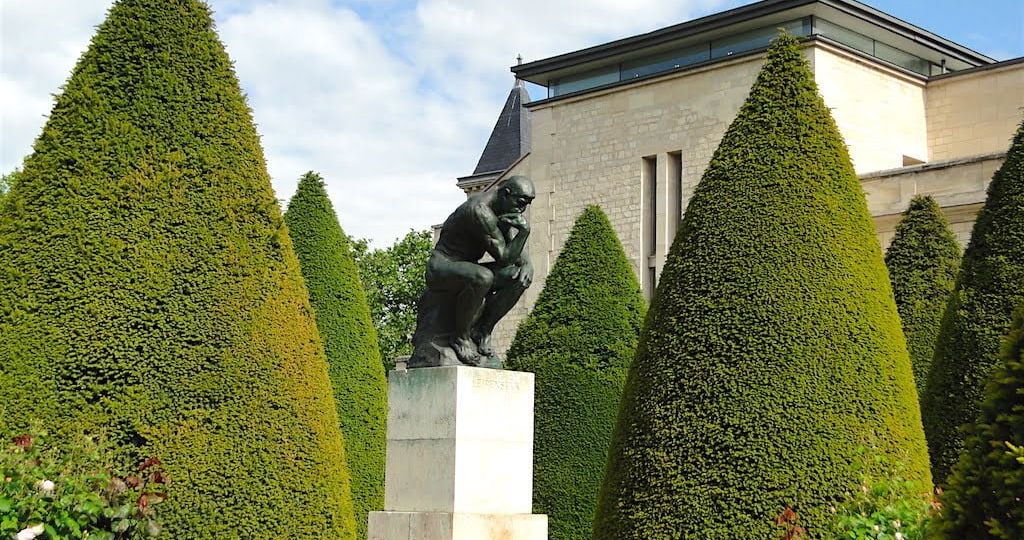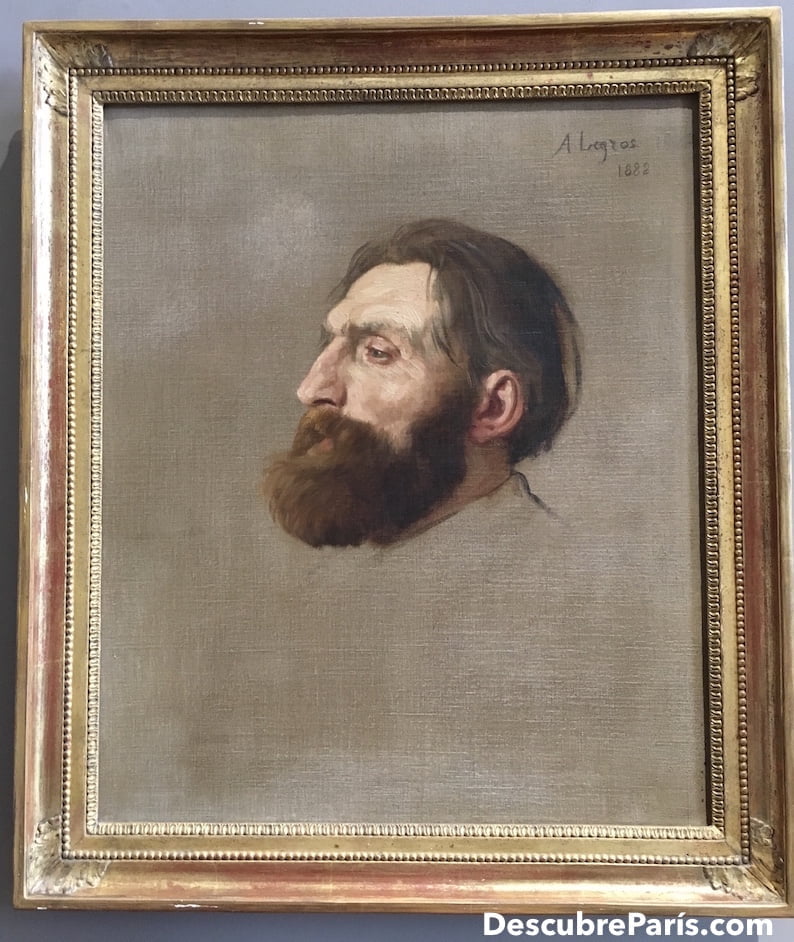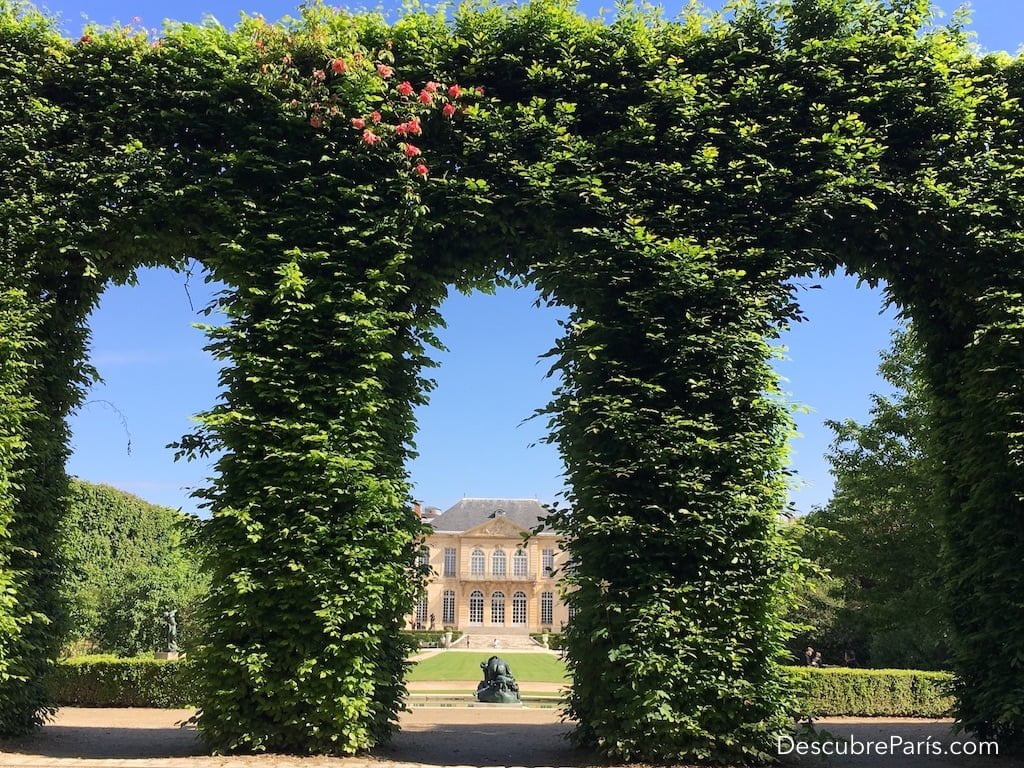
Discovering the Art and Sculptures of Rodin in Paris
One of the many surprises that Paris has is the Musée Rodin. We say it’s a surprise because his work and his gardens are a very interesting mix to discover. Here we’ll tell you a little bit more about this place and the work of one of the most important French artists and of modern sculpture.
Who was Rodin?

Auguste Rodin is one of the most important French sculptors of the second half of the XIX century. He is considered one of the precursors of modern sculpture. He was born in Paris in 1840 and died in Meudon on November 17th, 1917.
Rodin was born to a working-class family. He didn’t excel in school due to an undiagnosed nearsightedness. However, seeing his ability and taste for design, his parents enrolled him in the Petite École, a school specializing in mathematics and arts. There he immersed himself in the world of art and design.
Ironically, Rodin failed the entrance test to the School of Fine Arts three times because of his “lack of humanistic culture” and because his style was not in line with the neo classical traditions at the time.
His work paved the way for new expressions of the body in sculpture, as a mirror to the soul and passions, with which we could all feel a connection. Rodin´s big breakthrough was eliminating “rigidity” from sculptures, taking away temporary signs (such as clothing or accessories), and giving movement to the body.
He established the idea that it wasn’t necessary to “finish” a sculpture and recognized every fragment as an integral part of the piece. This made him one of the forefathers of modern sculpture.
Some of his most memorable pieces
During his time as a sculptor Rodin created innumerable pieces, some of the most notable are The Age of Bronze (which brought him to fame), The Burghers of Calais, Monument to Balzac, The Gates of Hell, The Thinker, and The Kiss, among many others.
The Gates of Hell

Measuring in at 19 feet (6 meters) by 13 feet (4 meters), this work was left unfinished by Rodin, who tried time and again to finish it. It is made up of a group of 200 figures which made up the base of this artist’s work through his career. It is inspired by the Divine Comedy by Dante and it served as a response to the Gates of Paradise in the Florence Baptistery.
The Thinker

This sculpture was initially called The Poet and is a world-renown piece. In it, you see the image of a man, lost in his own thoughts, but he has a strong body, which suggests his capacity to take action. It represents Dante, author of the Divine Comedy, and he seems to be looking at the gates of hell and thinking about the human condition.
The Kiss

It is considered as the representation of sensuality in Rodin’s sculpture catalog. It represents the forbidden passion between Paolo Maltesa and his sister-in-law, Francesca Rimini, who are murdered by her husband as it is told in the Divine Comedy. Of course, this sculpture also represents Rodin´s life who at the time had a secret affair with the sculptor Camille Claudel.
About the museum’s building

Also known as the Biron Palace or Hôtel Biron, it goes back to 1737. It was a private property that changed owners several times: financiers, Dukes, diplomats, and ended up as the Société du Sacré-Coeur de Jésus’s property. The nuns established a boarding school for women (1820) that lived until 1904.
After this they tried to sell the building, but an interested party came along and it ended up having several tenants, all of them artists: the writer Jean Cocteau, the painter Henri Matisse, the dancer Isadora Duncan, writer Clara Westhoff and her husband the poet Rainer Maria Rilke.
Thanks to the latter two, Rodin discovers the building and its gardens. He initially rents four rooms and later on went on to rent the whole building.
The State purchased the small palace but, in order to stay there, Rodin decides to donate his entire life’s work of plaster, marble, bronze, and stone, his designs and his complete art collection to the State. He then had them create the Musée Rodin and, in return, he was able to live there for the rest of his life.
Why visit the Rodin Museum?

At Descubre Paris we have included this museum on the fifth day of our 5-day Detailed Guide, and have dedicated a whole article to it for the following reasons:
- Rodin´s work is something to be admired: he was a sculptor who brought on modernity, who was inspired by the past but found a new way to look at and create sculptures. His work is known around the world and many people have unwittingly seen replicas, satire, or caricatures of his pieces, such as The Thinker or The Kiss. He is part of the rich artistic background that can be found in France, especially in Paris, where Rodin was born.
- There are other artists’ works exhibited: Rodin was a great collector and acquired several bodies of work. In the museum you will find paintings by Monet, Renoir, Munch, and even Van Gogh.
- The gardens of the Musée Rodin are charming: a walk through the gardens, filled with art, can be a lovely thing to do in Spring or Summer. There is even a set path to better appreciate the different pieces laid out.
Practical information:
Musée Rodin is located on 77 Rue de Varenne, in the 5th arrondissement. You can take metro Line 13 to get there, and it is open every day, except Mondays, from 10 a.m. to 6:30 p.m. It is also closed on January 1st, May 1st, and December 25th.
It is important to remember that the museum sometimes hosts events for Fashion Week, which is why it is likely that during those days access will be restricted. Always check for the most up to date information on the museum’s website.
Keep in mind:
If you are passionate about art, there is another site pertaining to the Musée Rodin in Meudon: a house where the artist lived and died, and where you can also explore, touch and interact with some of the artist´s pieces. It is 30 minutes away from Paris and is an interesting outing if you have the time for it. For more information, visit the website
Remember
The Musée Rodin is part of our Descubre Paris 5-day Detailed Guide, where we explain all the details on how to get there, dining options, and other activities for the day.
Paris is waiting for you.
Á bientôt!
©

